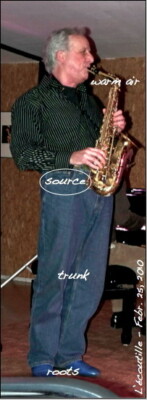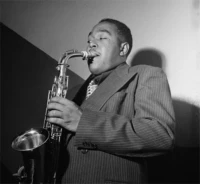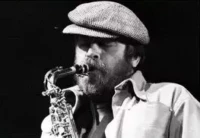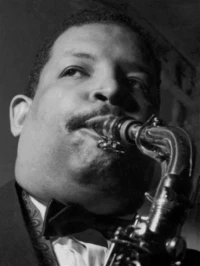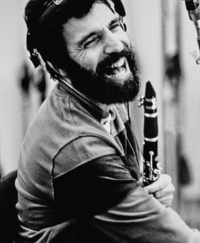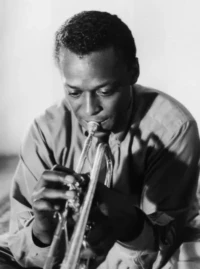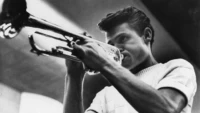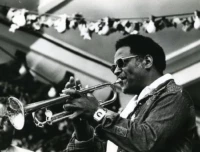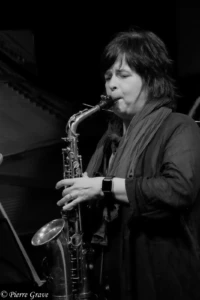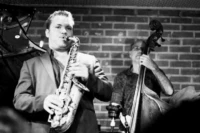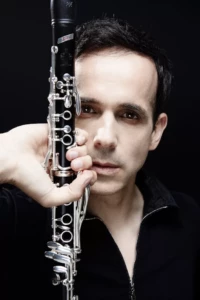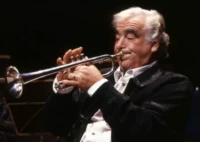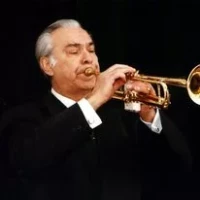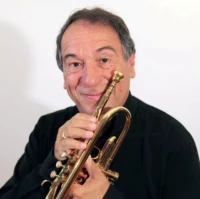My thoughts about the musician sound elaborate from the following concepts :
Sound and Internal Vibration
My exploring the alto saxophone, coming from practicing the clarinet, made me realize how paramount the sound foundation is, as resulting from the mastering of my internal vibration : by avoiding any physical stress disturbing the musical gesture (“body tensions shrink your sound“, as Marie-Christine Mathieu shows it), we manage to merge with our instrument.
Some basic components of this body / instrument set are positioned hereafter : the internal vibration propagates from the source, through your body, down to the ground through the virtual trunk and the roots, and keeps the warm air in the horn thanks to its minimal flow.
In other words, the musical expression is fully controlled when the body fades out behind the sound. Then, the playing process of the body / instrument set becomes flexibly driven by the musician, who can then concentrate on his musical speech since his sound is already set in place : from this point onwards, other features of the musical speech logically build up, such as articulation, nuances, rests…
« In the first place, you should learn to know yourself : learn to be aware of everything which must be achieved before playing a sound. »
Robert Pichaureau, Introduction à la Leçon de trompette (Translated by Guy Robert)
Making The Sound Ripen
Many findings result from this approach, which was happily taught to me by Master Robert Pichaureau some years ago (1983-85) and is feeding my personal routine in a continuous way : practice and assimilation make concepts mature with time, so that they eventually become obvious.
Along these lines, this great teacher helped many musicians to unveil and (re-)build up their sound, enhancing these principles in a unified way for all types of instruments (he used to refer to The Inner Violin / Le violon intérieur of Dominique Hoppenot, extending the concept beyond the brass and woodwind players).
the sound of inner violin
Your best inner vibration is lived through and felt in consistency with your natural breathing, hence feeding your musical speech, which becomes spontaneous while getting more personal.
Here are Dominique Hoppenot‘s words in Le violon intérieur , about the necessary feeling and experimenting :
« In order to express (your art), (…) you must exist within your body, you should have something to say, and be able to say it.«
« What is described in a teaching speech as live and always renewed concepts easily becomes dogmatic when written down and you might take a risk in being satisfied by an intellectual understanding while only the lived experience matters.«
« True knowledge develops only through analyzing and assimilating information according to your own personality, and “knowing“ necessarily requires the duty of personal experience.«
Dominique Hoppenot, Le violon intérieur (Translated by Guy Robert)
Your Mind Drives Your Art
Le Traité méthodique de pédagogie instrumentale, written by Michel Ricquier, also shows and explains the sound produced by the brass or the woodwind player. As a complement, the paramount role of mind for the art expression is developed in his book L’utilisation de vos ressources intérieures.
In the USA, Joe Allard was a notorious Master, as a clarinet and saxophone player, who educated several generations of musicians, following similar principles, from whom I shall mention excerpts consistent with my observations.
« If you know how to play, if you understand your approach, then you have a good plan for your playing. You eliminate much of the fear of playing. There’s still concern because you want to play well, but you’re not afraid to blow.«
Joe Allard : His Contributions to Saxophone Pedagogy and Performance, by Debra Jean McKim
David Liebman is one of his famous followers, who elaborated his ideas about the development of a personal saxophone sound.
« In truth, there are no rules, only concepts. In all honesty, it took me years to understand some of his directions. This was especially true for the all-important overtone exercises and their significance. It finally dawned on me during my twenties how much the tone of the great players evidenced ease of production, evenness of sound, a rich and deep sonority, and most of all, personal expressiveness. »
David Liebman, Developing a Personal Saxophone Sound
Great musicians of all styles demonstrate as many embodiments of personal sound.
Among the most significant ones to me, we can find Charlie Parker, Phil Woods, Cannonball Adderley, David Liebman, Eddie Daniels, Miles Davis, Chet Baker, Clark Terry, Patrick Bartley, Pierrick Pédron, Jean-Charles Richard, Géraldine Laurent, Baptiste Herbin, Martin Fröst, Romain Guyot, Maurice André, Timofei Dokshizer, Guy Touvron…
Ringing Multiple Bells
These teachings are feeding my understanding, following several milestones selected in a personal fashion, describing my feelings (and relevant proprioceptions) stemming from a progressive assimilation of the Pichaureau method and complementary notions.
the instrument
The internal vibration flows from the musician’s body to his instrument which behaves as an amplifier : making one’s instrument sound good aims at optimizing its resonance.
the posture
Your body should be positioned so as to avoid unnecessary stresses by relaxing downwards, down to the ground, taking advantage of the verticality of the sound column.
breathing and air
The good sound builds up on the exhalation, which seamlessly extends the inhalation : your aim should be to pick it up, from your listening to your natural breathing.
the air column
You should figure out the air column, better named as « sound column », as deep as possible : it feeds up your internal vibration which is amplified by the instrument.
don’t blow it !
You should not externalize your intended motion by willing to blow, in order to be able to drive downwards your internal vibration : by avoiding to actually blow out, you let your global resonance develop, without disturbing your sound with unnecessary stresses.
the sound source
From your diaphragm center, you visualize the starting point of your internal vibration as deep as you can, down to the heels : this will make your sound column grow up, spreading a fatter sound from your body to your instrument.
the embouchure
Your internal vibration propagates through the embouchure – which you should figure out as if it were located at the bottom of your sound column – producing then a sound resulting from the musician / instrument configuration : this requires also a good reactive gear.
fingers and tongue
Your fingers and tongue finally embody the tools of you wind player becoming a sound sculptor by customizing your expression carried on by your internal vibration.
a virtual trunk
Like the sportsman towering his performance by merging himself into his pelvis, you musician forget about your trunk for the benefit of your lower limbs, which then may appear as a new virtual trunk : it supports your vibrating body, echoing through the surrounding space.
highs and lows
Exploring the whole range of your instrument then becomes easier by keeping your sound column relaxed from the bottom, where your exhaling and inhaling naturally link up in the fat vibration : you can now master your legato playing over a large range, while feeling the grain of your sound.
the sensations
When you listen to your natural breathing and you absolutely do not push, then your relaxation flows down, bringing the enjoyment of your letting-go.
the convergence
As those many factors converge towards your vital center point, you may consider your body as unified behind your instrument, which receives its vibrating energy and makes it sound all around.
Selected References
The authors mentioned in these refences are feeding my thoughts on the mastering of internal vibration and provide numerous leads towards the full expression of your musical intent.
